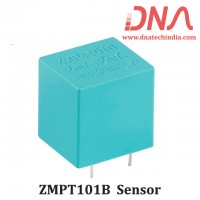Flammable liquid level monitoring |
||
FIELD OF INVENTION:The invention relates to systems for measuring the fluid level in storage containers or tanks, and more particularly, to a non contact liquid measurement system to determine the level of flammable fluids in storage containers or tanks. |
||
BACKGROUND OF INVENTION:Gasoline filling stations and other entities often store gasoline or other flammable liquids in storage tanks or containers that are commonly underground. As it is important to know how much liquid is present in the storage tank, and an individual generally cannot visually see how much liquid is in the storage tank, various methods have been used to measure the amount of liquid in the tank. |
||
|
One of the most common methods to measure the liquid in storage tanks is to use a dipstick that is inserted and then removed from the storage tank. While this may provide a general estimate of the amount of fluid in the storage tank in some circumstances, it is both cumbersome to use and subjective in how the fluid level is read. |
||
|
Traditional devices for sensing or providing information on fluid levels have generally been analog devices that had limited accuracy. Many of the prior systems also utilized electrical parts that created hazards due to the volatile nature of the gasoline or flammable liquid. |
||
|
Therefore, there is a need for a system and method that can accurately and safely determine the amount of gasoline or other flammable fluids in storage tanks, while being economical and easy to manufacture and install. |
||
|
This technology sense and measure liquid level, volume without making physical contact with the liquid itself. This offers distinct advantages over many contact technologies in applications where corrosive media, suspended solids, changing media characteristics, or coating media are present.
|
||
Measuring With Ultrasound |
|
Two components make up a typical non-contact ultrasonic measurement device: the transmitter, or electronics; and the transducer, or sensor. A piezoelectric crystal within the transducer converts electrical signals generated by the transmitter into a series of ultrasonic pulses. Under ideal conditions, these pulses are transmitted through free air at the speed of sound until they come into contact with the liquid surface where they are reflected back to the transducer. The transmitter’s electronics then measures the pulse’s round-trip time and digitally processes the information to indicate liquid level. |
 |
|
Moreover in this project we will be interfacing this unit to a PC so the owner can monitor the liquid level in his office only. |
||
APPLICATION: |
||
|
|
||
Text Books: |
||
|
||
Website: |
||
Components UsedMagazines: |
||
|




